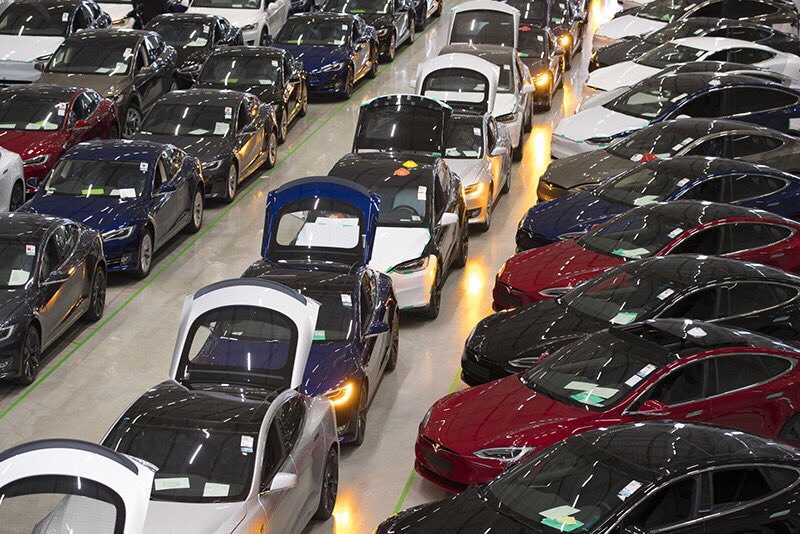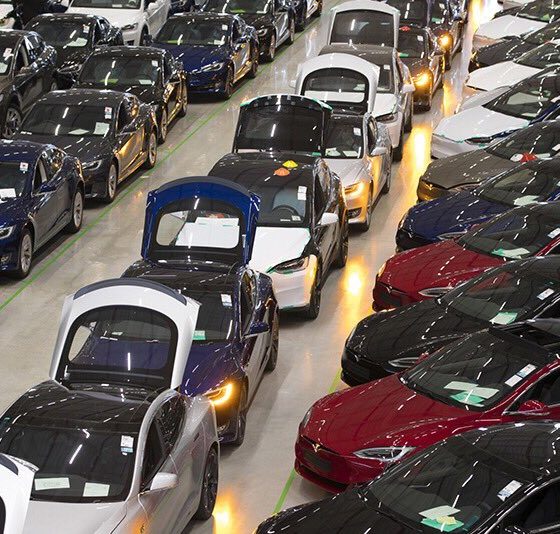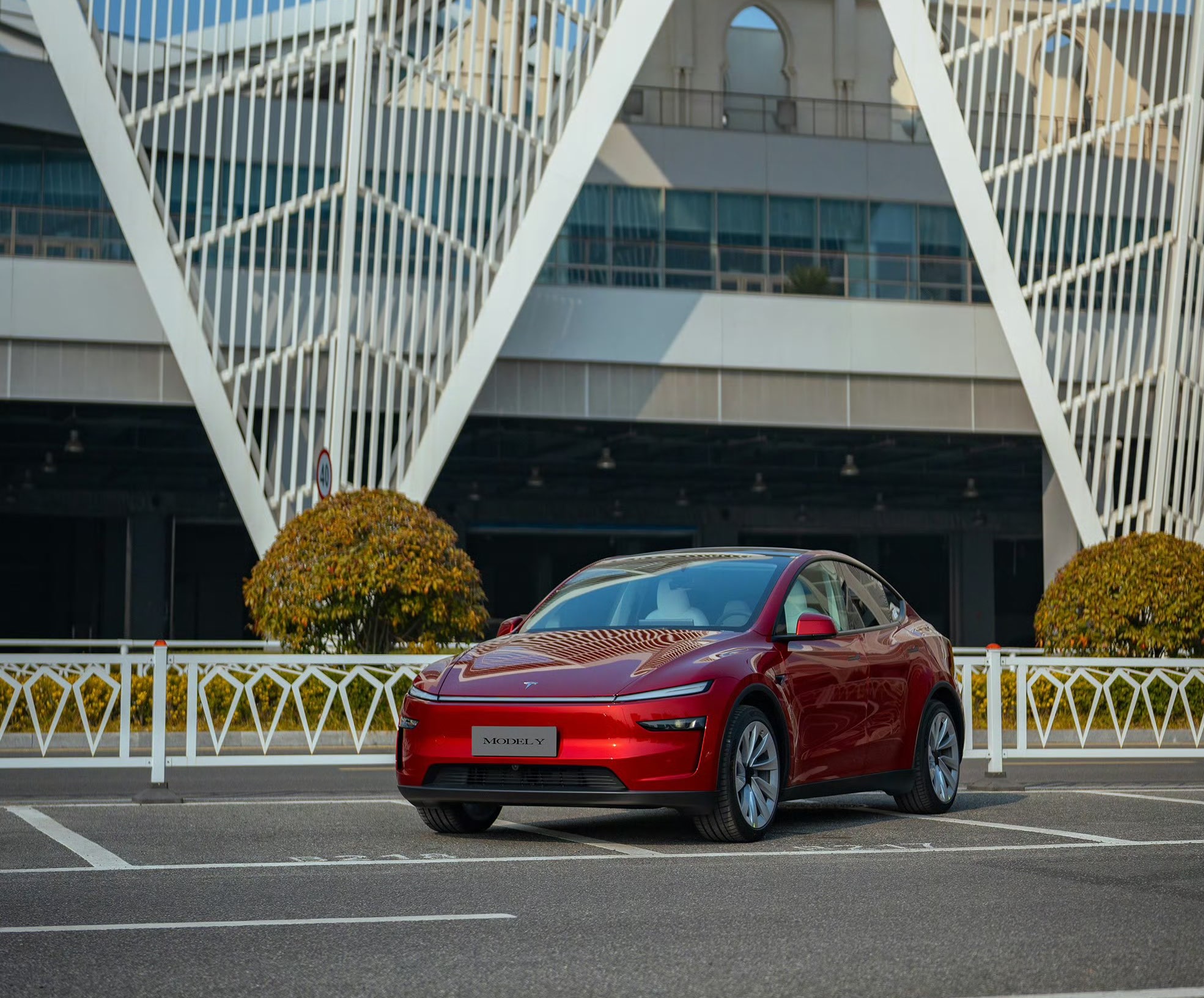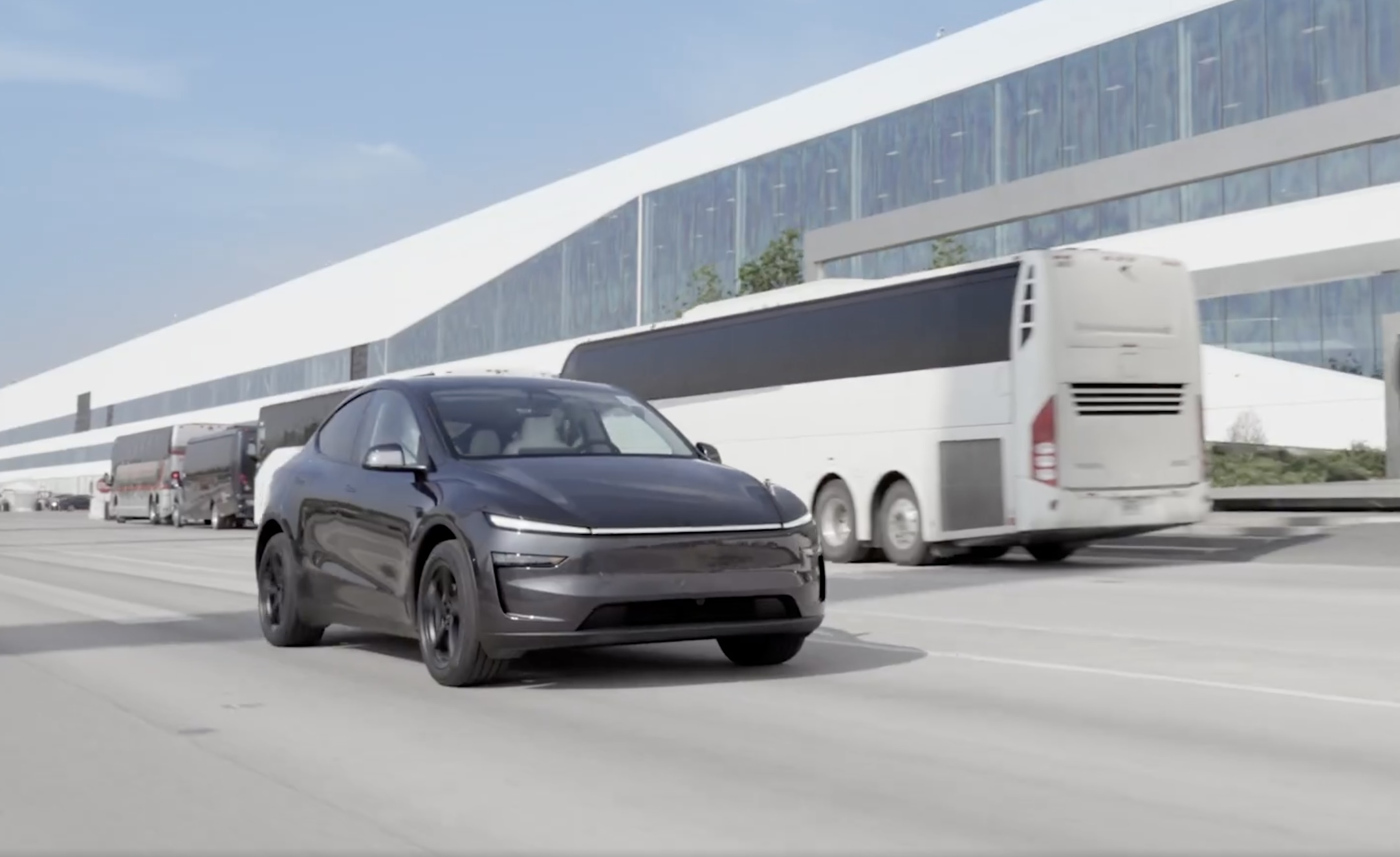

Investor's Corner
Tesla makes its Gigafactory 3 construction timeline even more ambitious
When Tesla announced its estimated timeline for Gigafactory 3, many were skeptical. The electric car maker’s critics dismissed it as another Elon Musk prediction that won’t come true. From Wall Street, Consumer Edge Research senior auto analyst James Albertine flat-out stated that Tesla’s timeline, which estimated the facility’s vehicle production to commence roughly two years after construction begins, is simply “not feasible.”
Tesla is now aiming to accelerate the timeline of Gigafactory 3’s construction even further.
The electric car maker recently released its Q3 2018 vehicle production and deliveries report, revealing that it produced and delivered more than 80,000 electric cars over the past quarter. The company’s Q3 report also mentioned that its Model S and X vehicles saw increased deliveries despite headwinds from the ongoing trade tensions between the United States and China, which add a 40% import tariff on Tesla vehicles entering the country. Tesla notes that overall, it is “operating at a 55% to 60% cost disadvantage compared to the exact same car locally produced in China.” To help address these challenges, Tesla revealed that it is accelerating the construction of Gigafactory 3, which, unlike Gigafactory 1 in Nevada, will be capable of producing electric vehicles.
“We are accelerating construction of our Shanghai factory, which we expect to be a capital efficient and rapid buildout, using many lessons learned from the Model 3 ramp in North America,” Tesla indicated in its Q3 deliveries and production report.
This is something that Tesla teased during its past Q2 2018 earnings call, when CEO Elon Musk and CTO JB Straubel noted that the Shanghai factory would likely be less capital intensive as the company’s facilities in the United States. Musk, for one, noted that Tesla is confident it “can do the Gigafactory in China for a lot less,” adding that the cost of the facility would likely be “closer to $2 billion” at the 250,000 vehicle-per-year rate. Straubel further noted that the company had found several ways to improve efficiency and speed.
“We found a surprising number of ways to improve efficiency and speed and density as well at Gigafactory 1, and all those lessons will absolutely be shared with Gigafactory 3. In just recent weeks and months, we found some – certain areas of production that have been very capital intensive that we’ve been able to speed up with almost no additional CapEx by maybe 20%, even 25% or 30%,” Straubel said.
Tesla did not reveal its updated timeline for Gigafactory 3’s construction, but considering its ambitious initial goal, the new schedule would likely raise even more eyebrows. That said, Tesla’s aim of getting Gigafactory 3 operational within the next couple of years is something that is not as farfetched as the company’s skeptics would assert. The project, after all, has already started moving, with local news site Beijing Business Daily previously noting that around 30% of the facility’s funds are now ready. Reports have also emerged stating that the Shanghai government is assisting Tesla in acquiring loans from local banks to help fund the construction of Gigafactory 3.
Inasmuch as Tesla’s accelerated timeline for Gigafactory 3’s construction is very ambitious, the capability of China to construct large structures quickly could prove to be a strategic advantage for the electric car maker. Chinese construction firms, after all, are responsible for quick, precise feats of engineering, which included projects like setting up a track replacement for a train station in 8.5 hours, and constructing a full-fledged 57-story skyscraper in just 19 days. If Tesla taps into the country’s premier construction workforce, Gigafactory 3 would likely start operations sooner than expected.

Investor's Corner
Mizuho keeps Tesla (TSLA) “Outperform” rating but lowers price target
As per the Mizuho analyst, upcoming changes to EV incentives in the U.S. and China could affect Tesla’s unit growth more than previously expected.

Mizuho analyst Vijay Rakesh lowered Tesla’s (NASDAQ:TSLA) price target to $475 from $485, citing potential 2026 EV subsidy cuts in the U.S. and China that could pressure deliveries. The firm maintained its Outperform rating for the electric vehicle maker, however.
As per the Mizuho analyst, upcoming changes to EV incentives in the U.S. and China could affect Tesla’s unit growth more than previously expected. The U.S. accounted for roughly 37% of Tesla’s third-quarter 2025 sales, while China represented about 34%, making both markets highly sensitive to policy shifts. Potential 50% cuts to Chinese subsidies and reduced U.S. incentives affected the firm’s outlook.
With those pressures factored in, the firm now expects Tesla to deliver 1.75 million vehicles in 2026 and 2 million in 2027, slightly below consensus estimates of 1.82 million and 2.15 million, respectively. The analyst was cautiously optimistic, as near-term pressure from subsidies is there, but the company’s long-term tech roadmap remains very compelling.
Despite the revised target, Mizuho remained optimistic on Tesla’s long-term technology roadmap. The firm highlighted three major growth drivers into 2027: the broader adoption of Full Self-Driving V14, the expansion of Tesla’s Robotaxi service, and the commercialization of Optimus, the company’s humanoid robot.
“We are lowering TSLA Ests/PT to $475 with Potential BEV headwinds in 2026E. We believe into 2026E, US (~37% of TSLA 3Q25 sales) EV subsidy cuts and China (34% of TSLA 3Q25 sales) potential 50% EV subsidy cuts could be a headwind to EV deliveries.
“We are now estimating TSLA deliveries for 2026/27E at 1.75M/2.00M (slightly below cons. 1.82M/2.15M). We see some LT drivers with FSD v14 adoption for autonomous, robotaxi launches, and humanoid robots into 2027 driving strength,” the analyst noted.
Investor's Corner
Tesla stock lands elusive ‘must own’ status from Wall Street firm

Tesla stock (NASDAQ: TSLA) has landed an elusive “must own” status from Wall Street firm Melius, according to a new note released early this week.
Analyst Rob Wertheimer said Tesla will lead the charge in world-changing tech, given the company’s focus on self-driving, autonomy, and Robotaxi. In a note to investors, Wertheimer said “the world is about to change, dramatically,” because of the advent of self-driving cars.
He looks at the industry and sees many potential players, but the firm says there will only be one true winner:
“Our point is not that Tesla is at risk, it’s that everybody else is.”
The major argument is that autonomy is nearing a tipping point where years of chipping away at the software and data needed to develop a sound, safe, and effective form of autonomous driving technology turn into an avalanche of progress.
Wertheimer believes autonomy is a $7 trillion sector,” and in the coming years, investors will see “hundreds of billions in value shift to Tesla.”
A lot of the major growth has to do with the all-too-common “butts in seats” strategy, as Wertheimer believes that only a fraction of people in the United States have ridden in a self-driving car. In Tesla’s regard, only “tens of thousands” have tried Tesla’s latest Full Self-Driving (Supervised) version, which is v14.
Tesla Full Self-Driving v14.2 – Full Review, the Good and the Bad
When it reaches a widespread rollout and more people are able to experience Tesla Full Self-Driving v14, he believes “it will shock most people.”
Citing things like Tesla’s massive data pool from its vehicles, as well as its shift to end-to-end neural nets in 2021 and 2022, as well as the upcoming AI5 chip, which will be put into a handful of vehicles next year, but will reach a wider rollout in 2027, Melius believes many investors are not aware of the pace of advancement in self-driving.
Tesla’s lead in its self-driving efforts is expanding, Wertheimer says. The company is making strategic choices on everything from hardware to software, manufacturing, and overall vehicle design. He says Tesla has left legacy automakers struggling to keep pace as they still rely on outdated architectures and fragmented supplier systems.
Tesla shares are up over 6 percent at 10:40 a.m. on the East Coast, trading at around $416.
Investor's Corner
Tesla analyst maintains $500 PT, says FSD drives better than humans now
The team also met with Tesla leaders for more than an hour to discuss autonomy, chip development, and upcoming deployment plans.

Tesla (NASDAQ:TSLA) received fresh support from Piper Sandler this week after analysts toured the Fremont Factory and tested the company’s latest Full Self-Driving software. The firm reaffirmed its $500 price target, stating that FSD V14 delivered a notably smooth robotaxi demonstration and may already perform at levels comparable to, if not better than, average human drivers.
The team also met with Tesla leaders for more than an hour to discuss autonomy, chip development, and upcoming deployment plans.
Analysts highlight autonomy progress
During more than 75 minutes of focused discussions, analysts reportedly focused on FSD v14’s updates. Piper Sandler’s team pointed to meaningful strides in perception, object handling, and overall ride smoothness during the robotaxi demo.
The visit also included discussions on updates to Tesla’s in-house chip initiatives, its Optimus program, and the growth of the company’s battery storage business. Analysts noted that Tesla continues refining cost structures and capital expenditure expectations, which are key elements in future margin recovery, as noted in a Yahoo Finance report.
Analyst Alexander Potter noted that “we think FSD is a truly impressive product that is (probably) already better at driving than the average American.” This conclusion was strengthened by what he described as a “flawless robotaxi ride to the hotel.”
Street targets diverge on TSLA
While Piper Sandler stands by its $500 target, it is not the highest estimate on the Street. Wedbush, for one, has a $600 per share price target for TSLA stock.
Other institutions have also weighed in on TSLA stock as of late. HSBC reiterated a Reduce rating with a $131 target, citing a gap between earnings fundamentals and the company’s market value. By contrast, TD Cowen maintained a Buy rating and a $509 target, pointing to strong autonomous driving demonstrations in Austin and the pace of software-driven improvements.
Stifel analysts also lifted their price target for Tesla to $508 per share over the company’s ongoing robotaxi and FSD programs.









